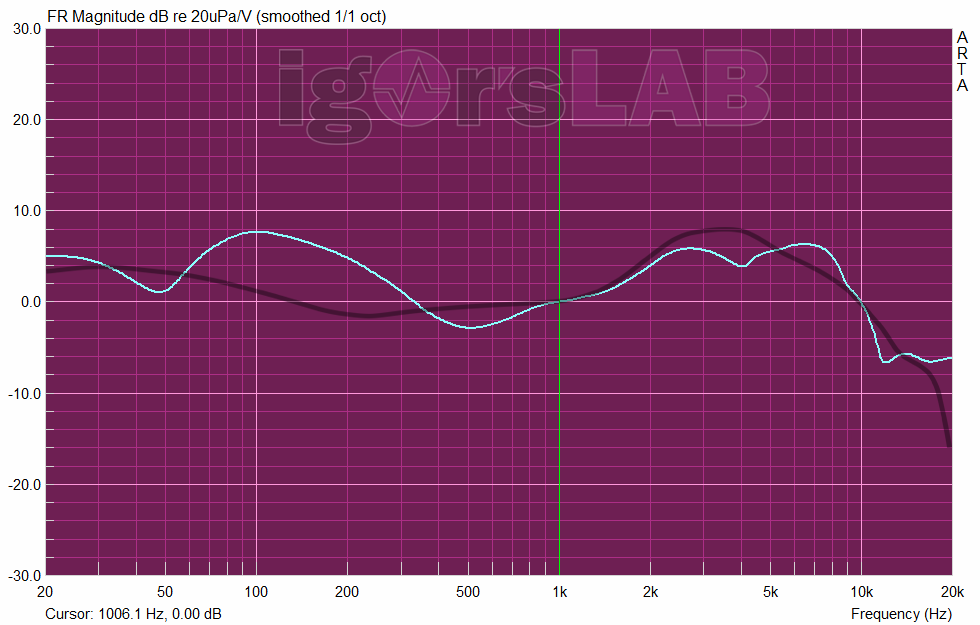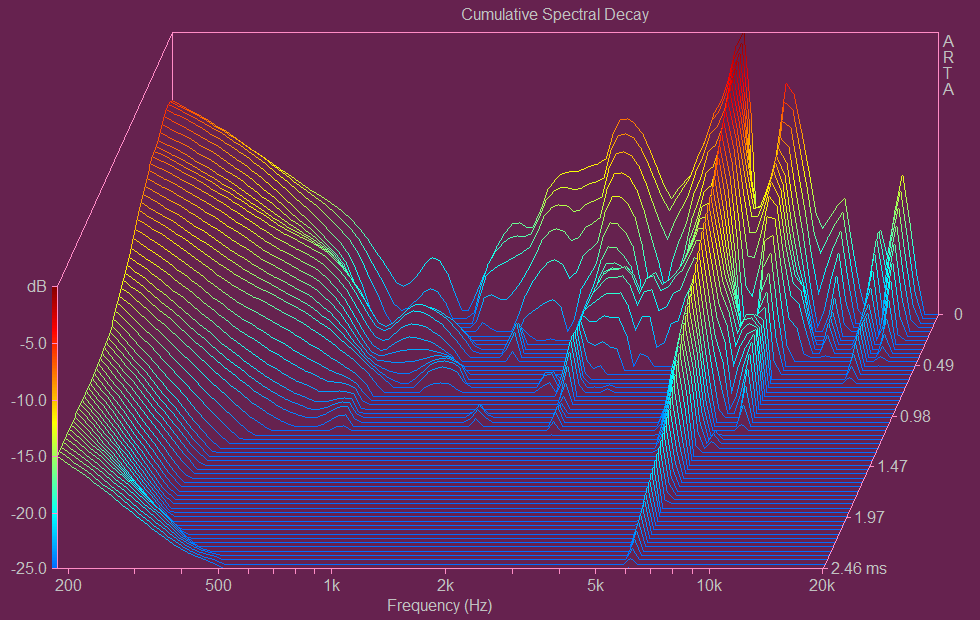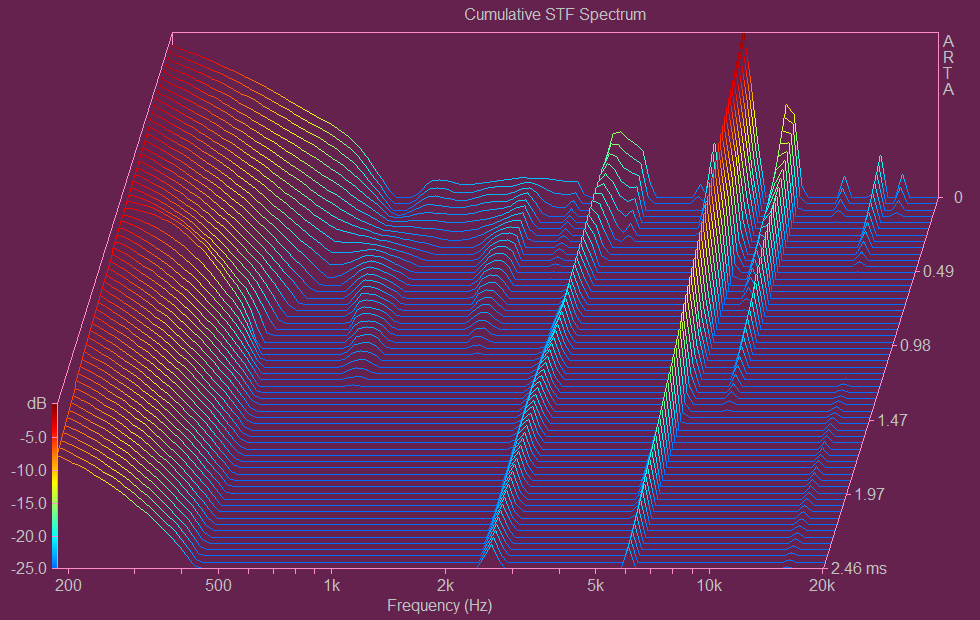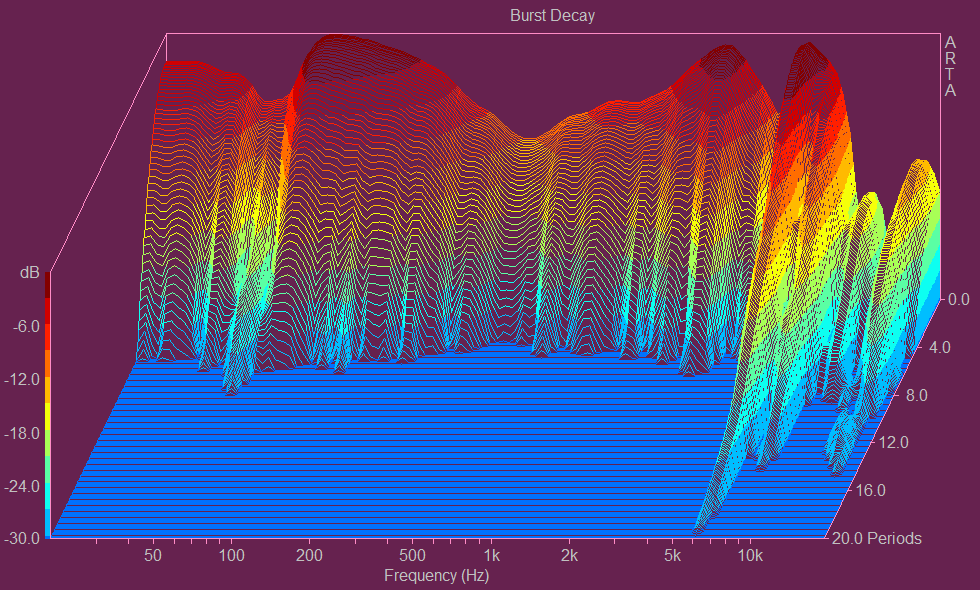Measurement setup and basics
Now the moment of truth strikes, once again. The test setup is finally final and the basis remains the well-known measurement microphone that has already proven itself for the in-ears. The suggestions for the realization Igor had found at Oratory and it is a pity that the page is down in the meantime. But I think, one should really measure the headphones correctly and the usual Hi-Fi text wall also with facts underlay and not only stupide any music pieces enumerate. Subjective feeling and objective measurement in two-tone should be standard for reviews. The complete measurement setup and methodology is described in detail in the article linked below. We can save these redundant details. Nevertheless, it is recommended to have read this article at least once.
Important clue: The Harman curve
The so-called Harman curve is an (optimal) sound signature that most people prefer in their headphones. It is thus an accurate representation of how, for example, high-quality speakers sound in an ideal room, and it shows the target frequency response of a perfect-sounding headphone. Thus it also explains which levels should be boosted and which should be attenuated based on this curve. This also explains in one fell swoop the term of the often quoted “bathtub tuning”, in which the Harman curve is, however, completely misused and exaggerated.
For this reason, the Harman curve (also called the “Harman target”) is one of the best frequency response standards for enjoying music with headphones, because compared to the flat frequency response (neutral curve), the bass and treble are slightly boosted in the Harman curve. This “curve” was created and published in 2012 by a team of scientists led by sound engineer Sean Olive. At the time, the research included extensive blind tests with different people testing different headphones. Based on what they then liked (or disliked), the researchers found and defined the most universally popular sound signature.
Matching headphones can be really problematic because of the human anatomy. Everyone has a slightly different pinna and ear canal, which affects how individuals perceive certain frequencies. In extreme cases, there is a few dB difference from person to person, which then explains the small differences in some measurements with artificial ears. Furthermore, if sound is not absorbed, it is additionally reflected by other surfaces. So, theoretically, a torso could also be included in the test setup, but that would be much too costly.
Measuring the frequency response
Let’s now move on to the measurement, where the headset was directly driven by the Creative Sound Blaster AE-9 as a reference (light turquoise curve). The output impedance of the AE-9’s power amplifier is well below one ohm, so there are no impedance shifts, especially in the bass range, and thus no additional measurement errors. You can see the influence of the ear pad in the low frequency range very well, which cannot be changed by more contact pressure. Overall, the response from 70 Hz up to about 3 KHz is extremely balanced and only resembles the obligatory acoustic bathtub. The peaks in the presence ranges at 3 KHz and later also 7 KHz are okay, since they aren’t too extreme, while the super high frequencies run out of steam at around 10 KHz for a short time, but are then satisfactorily pulled through.
If you smooth the whole thing down to the stop, the result is a somewhat rounder curve, which gallantly irons out the small point of criticism in the super high frequencies. The lower midrange is not over-present, but simply present and almost exactly where it really has to be, while the bass has been clearly fattened up. At 3 KHz, we again see the aurally-induced level rise, which falls a bit more weakly behind the ideal line of the Harman curve, leaving a somewhat restrained impression. Furthermore, the drivers overemphasize a bit in the super high frequencies at around 7 KHz, which tends to emphasize the sibilants and blow-off noises of instruments. Some things sound rather crisp (spiky), but some people definitely like that.
Cumulative Spectrum (CSD, SFT, Burst)
The cumulative spectrum refers to various types of graphs that show time-frequency characteristics of the signal. They are generated by successively applying the Fourier transform and appropriate windows to overlapping signal blocks. These analyses are based on the frequency response diagram already shown above, but additionally contain the element of time and now show very clearly as a 3D graph (“waterfall”) how the frequency response evolves over time after the input signal has been stopped. Colloquially, this is also called “decay” or “decaying”. Normally, the driver should also stop as soon as possible after the input signal is gone. However, some frequencies (or even whole frequency ranges) will always decay slowly(er) and then continue to appear in this diagram as longer lasting frequencies on the time axis. From this you can easily see where the driver has glaring weaknesses, perhaps even particularly “clangs” or where in the worst case resonances could occur and disturb the overall picture.
Cumulative Spectral Decay (CSD)
Cumulative spectral decay (CSD) uses the FFT and a modified rectangular window to analyze the spectral decay of the impulse response. It is mainly used to analyze the driver response. The CSD typically uses only a small FFT block shift (2-10 samples) to better visualize resonances throughout the frequency range, making it a useful tool for detecting resonances of the converter.
The picture shows very nicely the transient response and the not quite resonance-free progression up to plenty of 1 KHz. One can analyze and dissect the individual sound layers very nicely and that at 3 KHz the peak dominates quite well is also ok. Cardboard sound in the lower mids is missed, but the upper bass is too much. The overemphasis of the sibilants above 6 to 7 KHz is then again slightly noticeable. We measure a headset that “resonates” a bit more. You can like that, or not. Only I refer here already once also to the still following burst diagram.
Short-time Fourier Transform (STF)
The Short-time Fourier Transform (STF) uses the FFT and Hanning window to analyze the time varying spectrum of the recorded signals. Here, one generally uses a larger block shift (1/4 to 1/2 of the FFT length) to analyze a larger portion of the time-varying signal spectrum, especially approaching application areas such as speech and music. In the STF spectrum we can now also see very nicely the work of the drivers, which afford various weaknesses in some frequency ranges.
This “dragging” at the lower frequencies below 500 Hz is then repeated several times between about 2.5 and about 6.5 kHz. I noticed in this context that, for example, the bass components ensure that a kind of slight tremolo effect sets in in the mids above, which “modulates” the mids somewhat and pushes them along. Again, I would look for the reason in the ear pads, which seem to need some improvement in this regard.
Burst Decay
With the CSD, the plot is generated in the time domain (ms), while the burst decay plot used here is represented in periods (cycles). And while both methods have their advantages and disadvantages (or limitations), it’s fair to say that plotting in periods may well be more useful for determining the true decay of a driver with a wide bandwidth. And that’s where the headset doesn’t do too badly below 6 KHz. However, we can see the (intentional) resonance oscillations in the high frequencies. This can sound a bit sharp from case to case, but it doesn’t really get on your nerves if you want to listen to music of very different genres. For gaming, it’s also okay (and also seems intentional), which is good.
Interim conclusion
Above all, the burst decay plot shows the headset’s acceptable response. It reacts relatively quickly to any level changes and only suffers from a somewhat pappy bass, but that also suffers from the ear pad, which can be seen in the trace below 160 Hz. It is free of annoying resonances above that almost into the super high frequencies. Only the presence ranges are slightly overemphasized. However, one can live well with that, because all that doesn’t annoy one.







































8 Antworten
Kommentar
Lade neue Kommentare
Urgestein
Mitglied
Urgestein
Mitglied
Veteran
Veteran
Moderator
Veteran
Alle Kommentare lesen unter igor´sLAB Community →